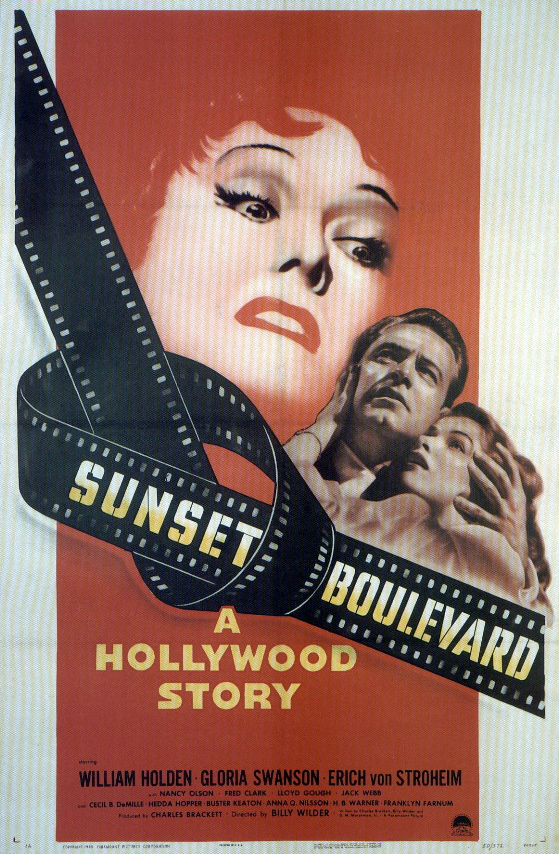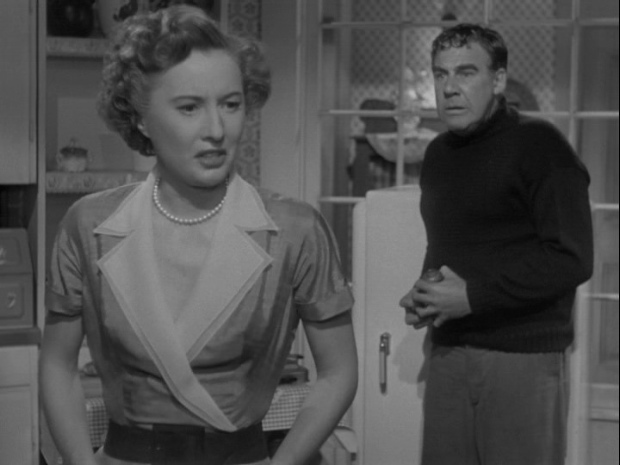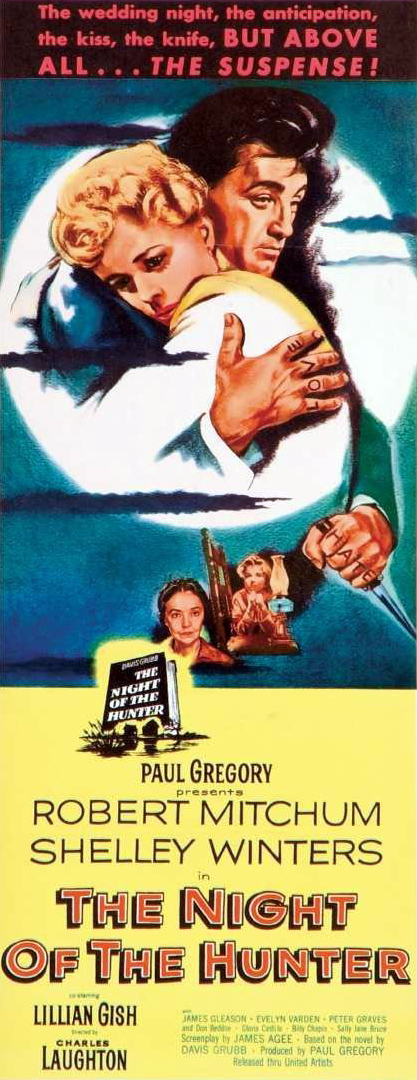
The dark view of the world reflected in traditional film noir
found expression in other kinds of Hollywood movies, ones which didn't
necessarily reflect a preoccupation with specifically male anxieties or
use the night-time urban underworld as an image. A strong tradition emerged
which centered on the home and domestic relationships and the ways
these seemed to be threatened by the colossal derangement of war on a
global scale and later by the specter of nuclear annihilation. Here are some of the films I see as representative
of this tradition:
Shadow Of A Doubt
Double Indemnity
Clash By Night
Blonde Ice
Leave Her To Heaven
Sunset Boulevard
The Night Of the Hunter
Scarlet Street
Daisy Kenyon
The Bad and the Beautiful
American homes weren't physically threatened by the violence
of WWII, at least not directly, but millions of sons and husbands and fathers from those homes
were sent out into harm's way — and the whole scale of the war seemed
to be a threat to the very idea of social order, to the very idea of
home and family as the bonding agents of civilization.
Hitchcock's Shadow Of A Doubt was the first great expression of this sense of domestic insecurity. Billy Wilder's Double Indemnity
offered a vision of how comfortable middle-class life might be infected
by the violence and cynicism of a world that had seemingly gone
mad. In the post-war era, in the shadow of nuclear annihilation,
other films, like Leave Her To Heaven and Clash By Night, reflected a deep suspicion of the old domestic verities — a sense that they might no longer be viable.

I would place Wilder's Sunset Boulevard in the category of domestic noir.
For one thing its action is mostly centered inside one house — but
the whole film is basically Wilder's deconstruction of his “home”, Hollywood, for which he felt both affection and
disgust. (Wilder's cynicism was very personal and eccentric, so
its dangerous to connect it too directly with broader social currents
— but it's clear that these broader social currents made his dark
visions commercially viable, and he must certainly have had at
least an intuitive appreciation of this fact.)

The Night Of the Hunter is, in my opinion, way too poetic, metaphorical and explicitly religious to be called a film noir, but it's certainly a dark film, and it deals with the issues of collapsed manhood that also informed the classic films noirs. If anything it's domestic noir.
It deals with the destruction of one home by a failed father, a long,
perilous journey in search of a new home, and the threat to that new
home by a demonic shadow father. Its expressionistic visual style
harks back to the silent era, to the UFA style, and has little in
common with the harsh, jagged, tabloid-style photography of classic noir.
It's interesting to note that The Night Of the Hunter was a box-office flop on its initial release, while the general run of classic films noirs
were consistently (if modestly) profitable almost to the end of the
Fifties. This suggests that Americans weren't prepared to
confront their post-war anxieties about manhood and the home too
directly. The film noir
form allowed for a kind of indirect expression of these anxieties
within the context of a nominally conventional crime thriller.
When exposed outside this context, as in The Night Of the Hunter,
they turned audiences off — the medicine was just too strong, the
scalpel too close to the bone. (Note that in the poster above, Sunset Boulevard
identifies itself as “a Hollywood story” whose pathology of the
collapsed male could, presumably, be imagined as confined to Tinsel
Town.)
All the films listed above involve murder or the threat of murder, which is why they are often thought of as films noirs, but they differ from the classic film noir in that they offer a strong female perspective and locate the origins of their existential catastrophes inside a home or homes.
The anxieties addressed by these domestic noirs
would be addressed more subtly and ultimately more accessibly in other kinds of
films in the 50s, most notably in the work of Douglas Sirk and in the
cycle of films concentrating on teen angst. When
filmmakers were able to deal with dark visions of American domestic
life outside the conventions of a crime thriller, the domestic noir lost much of its usefulness as a form.
[The noir credentials of the films listed above are as follows . . . Clash By Night is included in the Warner DVD noir series . . . noir expert Eddie Muller considers Sunset Boulevard one of the greatest of all noirs . . . Leave Her To Heaven, Shadow Of A Doubt and Double Indemnity are included in Nicholas Christopher's noir filmography in his book Somewhere In the Night and appear on many other lists of films noirs . . . the Wikipedia entry on the subject identifies The Night Of the Hunter as a classic-era film noir . . . the Internet Movie Database, as well as the VCI DVD, call Blonde Ice a film noir . . . Scarlet Street is included in Kino's second box set of films noirs . . . Daisy Kenyon is part of Fox's DVD noir series.]
